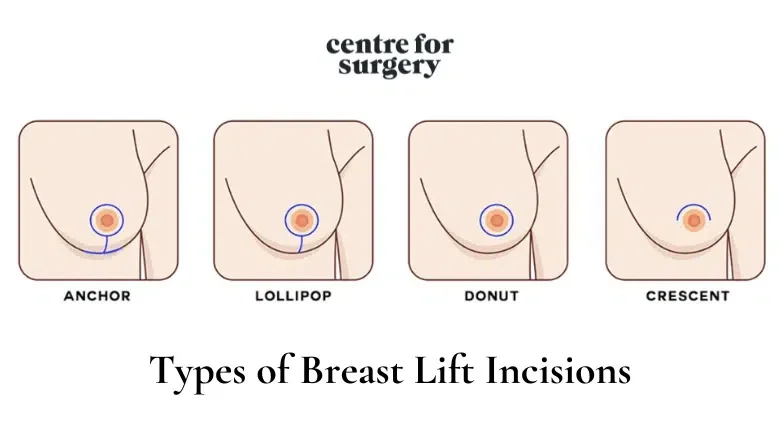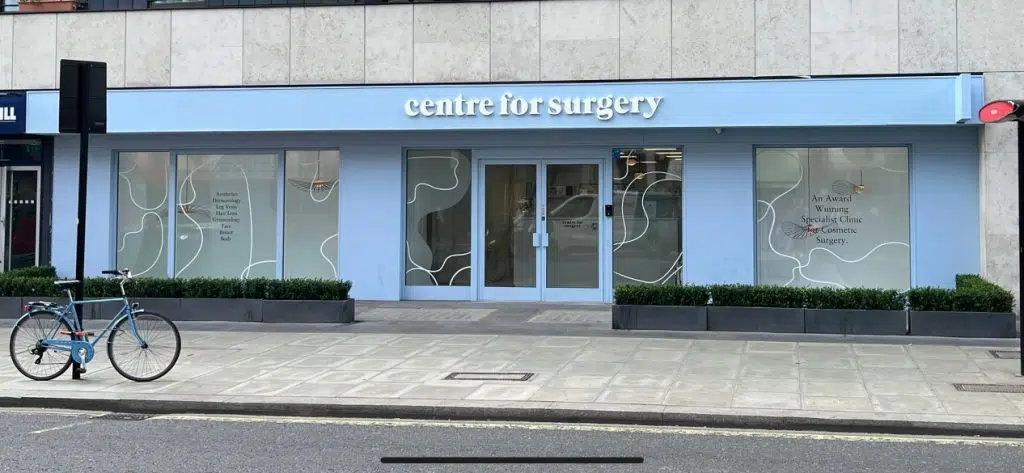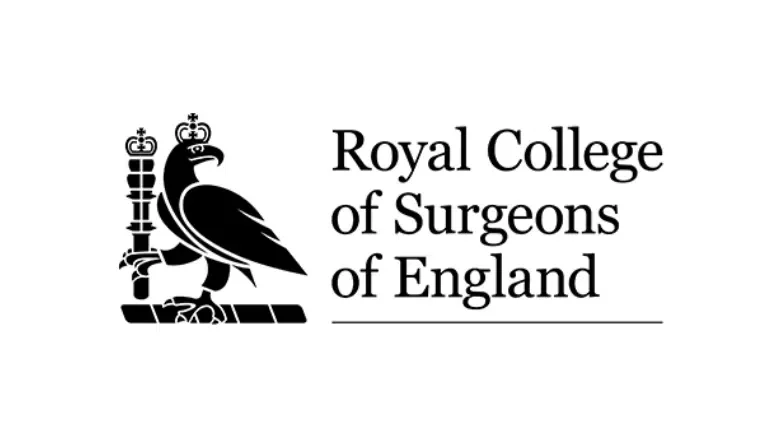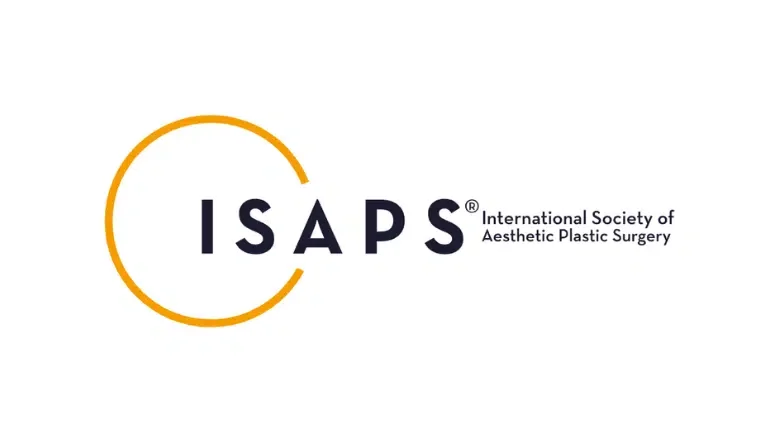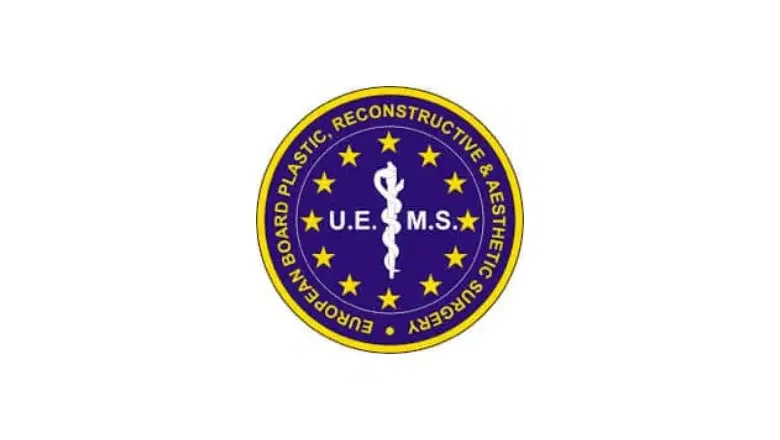Breast lift surgery is the most effective procedure for sagging or drooping breasts caused by pregnancy, breastfeeding, weight loss or the ageing process. Deflated breasts can be a significant source of concern for many women. Centre for Surgery are experts in breast uplift and mastopexy surgery, and our specialist plastic surgeons are renowned for their specialist expertise across the full range of breast surgery. Here, we answer your most commonly asked questions about breast lift surgery.
RELATED: What is a breast lift?
BREAST LIFT BENEFITS
What do deflated breasts look like?
Deflated breasts are characterised by a loss of volume, skin elasticity, and firmness. They may appear flattened, saggy, and droopy. The breast tissue may appear less full, and the skin may appear loose or stretched. The nipples may point downwards or appear to be lower on the breast than before. Deflated breasts can be caused by a variety of factors, including ageing, pregnancy, breastfeeding, weight loss, and genetics.
As women age, their breasts will naturally lose volume and firmness, and the skin will lose elasticity, which can cause the breasts to appear deflated. These changes can be more pronounced in some women than others, but they are a normal part of the ageing process.
If you are unhappy with the appearance of your deflated breasts and it’s causing you physical or psychological discomfort, breast lift (mastopexy) can improve the appearance of deflated breasts with or without breast implants.
RELATED: What Is Mastopexy?
What is breast ptosis?
Breast ptosis, also known as sagging or drooping breasts, is a condition in which the breasts lose their shape and firmness. The nipple and areola may also droop or point downwards. The severity of breast ptosis can range from mild to severe, with mild ptosis involving the nipples pointing downwards and severe ptosis involving the nipples pointing downward and the breast tissue falling below the crease underneath the breast.
Ptosis of the breast can be caused by several factors, including ageing, pregnancy, breastfeeding, weight loss, and genetics. As the skin and underlying tissue lose their elasticity over time, the breasts may droop or sag. Hormonal changes during pregnancy can also cause the breasts to change in size and shape. Additionally, breastfeeding can cause the breast tissue to stretch, which may contribute to ptosis.
Breast ptosis is a natural part of ageing, and it can happen to different degrees depending on the individual. Some women may choose breast lift surgery, also known as mastopexy, to correct the drooping of their breasts. This procedure is designed to lift and reshape the breasts to improve their overall appearance and symmetry.
What problems do sagging and drooping breasts cause?
Sagging or drooping breasts, also known as breast ptosis, can cause a number of physical and emotional problems, including:
- Back, neck, and shoulder pain
- Shoulder grooving caused by bra straps
- Difficulty finding clothing that fits properly
- Difficulty with physical activities and exercise
- Self-consciousness or embarrassment about the appearance of the breasts
- Reduced confidence and self-esteem
- Difficulty with sleeping
- Postural problems
- Psychological distress
Sagging or drooping breasts can be caused by several factors, including ageing, pregnancy, breastfeeding, weight loss, and genetics. It is important to note that breast ptosis is a natural part of ageing and that it can happen to different degrees depending on the individual.
How can I tell if I need a breast lift?
A breast lift may be required if you have developed saggy or droopy breasts due to pregnancy, white gloss or the ageing process. Sagging breasts with nipples that point downwards are suitable for correction with a breast lift.
Do I need a breast uplift?
If you are unhappy with the appearance of your sagging breasts and you have developed a loss of confidence, a breast lift could be a good treatment option.
What are the most common reasons to get a breast lift?
Breast lift surgery can help women restore their breasts to a more youthful appearance that appears perkier and sits higher up on the chest wall.
What are the medical reasons for getting a breast lift?
If you have developed pain, discomfort or skin irritation as a result of saggy or droopy breasts, then having a breast lift can help to resolve these symptoms.
What is the difference between breast lift surgery and breast implants?
Breast augmentation with implants involves the insertion of silicone implants into the breasts to enhance breast volume. A breast lift is designed to tighten and lift breast tissue to achieve a perkier appearance without increasing breast volume.
What are the different types of breast lifts?
A breast lift, also known as a mastopexy, is a surgical procedure that raises and firms the breasts by removing excess skin and repositioning the breast tissue and nipples. There are several types of breast lifts, including:
- Crescent Lift: This is a minimal incision technique where a crescent-shaped incision is made around the upper portion of the areola. This technique is best suited for patients with minimal sagging, and only a slight elevation is needed.
- Periareolar Lift: This technique involves making an incision around the circumference of the areola. This technique is also best suited for patients with minimal sagging, but more tissue can be removed to provide a greater lift.
- Vertical Lift: Also known as a “lollipop lift,” this technique involves making an incision around the areola and a second incision running vertically down the front of the breast. This technique is best suited for patients with moderate sagging, and it allows for more tissue to be removed and repositioned, resulting in a more significant lift.
- Inverted T Lift: Also known as an “anchor lift,” this technique involves making incisions around the areola, vertically down the front of the breast, and horizontally along the breast crease. It is best suited for patients with severe sagging, and it allows for the most tissue to be removed and repositioned, resulting in the most significant lift.
RELATED: Types of Breast Lift
What is the best type of breast lift after massive weight loss?
After massive weight loss, a woman’s breast tissue may become stretched and lose its shape. A breast lift, also known as mastopexy, is a surgical procedure that can lift and reshape the breasts to improve their overall appearance and symmetry.
The best type of breast lift for a patient who has undergone massive weight loss will depend on the degree of ptosis (sagging) and the amount of skin and breast tissue that needs to be removed. The surgeon will examine the patient’s breasts and consider the patient’s goals and overall health to determine the best type of breast lift.
Here are a few different types of breast lifts that may be considered:
- Inverted T (anchor-shaped) breast lift: This is the most common breast lift procedure used for patients who have undergone massive weight loss. It involves an incision around the areola, vertically down the breast, and horizontally along the crease of the breast. This type of breast lift is typically used for patients who have a significant amount of sagging and excess skin.
- Vertical breast lift (lollipop-shaped incision): This technique involves an incision around the areola and vertically down the breast. It is typically used for patients who have moderate sagging and minimal excess skin.
- Circumareolar (doughnut-shaped) breast lift: This technique involves an incision around the areola. It is typically used for patients who have mild sagging and minimal excess skin.
It’s important to note that these are just a few examples of the different types of breast lifts that may be considered and that the best type of breast lift will depend on the individual patient’s unique situation. Usually, the inverted T breast lift is best for breast ptosis after significant weight loss.
Can I get a breast lift with implants?
Combining a breast lift with implants is one of the most popular options to enhance the size and shape of the breasts. Women can achieve larger and perky-looking breasts with an improvement in upper pole fullness.
RELATED: Should I get a Breast lift with implants?
Can you get a breast lift without implants?
Breast lift is commonly performed as an isolated procedure for women who are primarily concerned with getting rid of sagging breast skin to achieve perky breasts that sit higher up in the breast wall.
RELATED: Breast Lift vs. Breast Augmentation – Which Is Best For Me?
Is it possible to have a breast lift without scars?
All types of breast lip surgery involve making incisions to remove sagging breast skin. Inevitably, scars will be formed after breast uplift surgery. Breast lift scars gradually fade over time. A vertical breast lift, also known as a lollipop breast lift, has shorter scars than the traditional full breast lift.
Can I get a non-surgical breast lift?
There are non-surgical options that claim to be able to lift the breasts, but it is important to note that these options are not as effective as a surgical breast lift (mastopexy), and their results may be temporary or not as significant. Some of the non-surgical options include:
- Ultrasound Therapy: Some practitioners use ultrasound therapy to lift and firm the breasts. The procedure uses high-frequency sound waves to heat the tissue and promote collagen production, which can firm and lift the breasts.
- Thread Lifts: Some practitioners use threads to lift the breasts. The threads are inserted under the skin and then pulled to lift the tissue.
- Silicone pads and bras: Some companies sell silicone pads and bras that can be worn to lift the breasts. These products can provide a temporary lift and improve the appearance of the breasts.
- Creams and lotions: Some companies sell creams and lotions that claim to lift and firm the breasts. However, these products are not backed by scientific evidence, and their effectiveness is unclear.
RELATED: What Is A Non-Surgical Breast Lift? – Does It Work?
Does a breast lift cost more than breast augmentation?
Breast lift surgery takes longer to perform compared to breast implants and is, therefore, more expensive.
Will breast size be reduced with a breast lift?
Breast lift surgery may slightly reduce the size of the breasts as your surgeon will remove excess skin to tighten the breasts. Larger breast reductions can be achieved with breast reduction surgery, which involves both the removal of excess skin and breast tissue.
Can a breast lift make your breast smaller?
Breast lift surgery is designed to enhance the shape and contour of the breasts by removing excess skin and breast tissue. The breasts will be roughly similar in size compared to before surgery, although they tend to be slightly smaller.
How can I get perky breasts?
There are a few ways to help achieve a more “perky” appearance of the breasts, including:
- Wearing a well-fitting, supportive bra: Wearing a well-fitting, supportive bra can help to lift and shape the breasts, giving them a more perky appearance.
- Exercising the chest muscles: Regularly exercising the chest muscles, such as by doing push-ups or chest presses, can help to strengthen the muscles that support the breasts, which can result in a more perky appearance.
- Losing weight: Losing weight can help to reduce the size of the breasts, which can make them appear perkier.
- Gaining muscle mass: Building muscle mass in the chest can help lift the breasts and improve their overall shape.
- Breast lift surgery: A breast lift, also known as Mastopexy, is a surgical procedure that can lift and reshape the breasts to improve their overall appearance and symmetry.
- Breast augmentation surgery: A breast augmentation surgery, also known as mammoplasty, is a surgical procedure that uses implants to enhance the size and shape of the breasts.
RELATED: How To Get Perky Breasts
Can breast lift surgery reduce cup size?
A breast lift marginally reduces cup size as the surgery involves the removal of excess skin and underlying breast tissue.
Will I need a breast lift with implants?
Many women would like a perkier and more youthful breast appearance with an increase in breast volume to enhance upper pole fullness. Breast lift with implants is the ideal procedure to achieve these aims.
RELATED: Should I Get A Breast Lift with Implants?
How can I lift my breasts naturally?
There are a few natural ways to lift and firm the breasts. However, it’s important to note that none of these methods will have the same effect as a surgical breast lift. Some natural ways to lift and firm the breasts include:
- Exercising: Building the muscles in your chest can help lift and firm your breasts. Targeted exercises such as push-ups, chest presses, and chest flys can help improve the tone and shape of your breasts.
- Massage: Massaging your breasts regularly can help improve circulation and tone the muscles in the area.
- Posture: Maintaining good posture can help lift and firm your breasts.
- Diet: Eating a healthy diet rich in fruits, vegetables, and lean protein can help keep your body in shape and support breast health.
- Wearing the right bra: Wearing a bra that fits properly and provides enough support can help lift and firm your breasts.
CELEBRITY BREAST LIFTS
Which celebrities have had a Breast lift?
- Queen Latifah
- Simona Halep
- Ariel Winter
- Scarlett Johansson
- Marie Osmond
- Amber Rose
IDEAL CANDIDATES FOR A BREAST LIFT
What is the ideal BMI to qualify for a breast lift?
It would be best if you had a body mass index below 30 to reduce the risks of surgery.
Can I have a breast lift if I am overweight or obese?
You will not be eligible to have a breast lift Surgery at Centre for Surgery if your body mass index is over 30.
Is it recommended to lose weight before having a breast lift?
If you are overweight, we would recommend losing weight before having surgery.
Can I have a breast lift while I am pregnant?
You should not have a breast lift or any other type of cosmetic surgical procedure whilst you are pregnant, as the breast will significantly change in shape and size.
Can a breast lift help to reduce back pain?
A Breast lift is not designed to reduce the size of large or heavy breasts and will, therefore, have minimal impact on anyone having back pain. Improving the position of the breasts on the chest may help to improve your posture and have an indirect effect on reducing back pain. Breast reduction surgery is the ideal procedure to get rid of neck, shoulder or back pain.
Can I have a breast lift if I already have implants?
Yes. A Breast lift can be performed over your existing breast implants without affecting the implant. However, if you have implants that are over ten years old, you may wish to consider replacing them.
Can you get a breast lift twice?
A breast lift, also known as mastopexy, is a surgical procedure that is used to lift and reshape sagging breasts. While it is possible to get a breast lift twice, it is generally not recommended unless there are specific medical reasons for doing so.
The breast lift procedure does have some limitations, it can only reposition the existing breast tissue to a higher location and remove the extra skin, but it can’t change the size of the breast or improve the quality of the skin. Therefore, getting a breast lift twice may not necessarily result in better or longer-lasting results.
Additionally, multiple surgeries can increase the risk of complications such as scarring and poor healing. It’s also important to remember that the skin and breast tissue may not have the same elasticity after the first surgery, making a recovery and results of a second surgery less predictable.
If you are considering a second breast lift, it is important to have an open and honest conversation with your surgeon about your goals and expectations, and to understand the potential risks and benefits. They will be able to provide you with personalised recommendations and a plan of action that is tailored to your individual needs.
How do I know if I need a breast lift or reduction?
The best way to determine which procedure is best for you is to have a face-to-face consultation. Women with large and heavy breasts causing back pain may be better suited to having a breast reduction. Saggy or droopy breasts caused by pregnancy, breastfeeding or weight loss can be effectively treated with a breast lift.
Does a breast reduction include a breast lift?
A breast reduction involves a breast lift in the same procedure to lift the breasts after the removal of excess tissue. A breast lift does not involve having a breast reduction, and it primarily focuses on removing excess skin.
How soon can I have a breast lift after completing breastfeeding?
We would recommend waiting at least six months after completing breastfeeding before having any type of breast surgery.
Should I get a breast lift before or after getting pregnant?
We would recommend having a breast lift after you have completed your family. Having a breast lift before pregnancy can result in further sagging and drooping once you have completed breastfeeding. This will require revision surgery to correct.
TYPES OF BREAST LIFT
What is a doughnut breast lift?
A doughnut breast lift involves making an incision around the full circumference of the areola and is suitable for patients with mild degrees of breast sagging.
What is a circumferential breast lift?
A circumferential breast lift is also known as a Benelli breast lift and involves making an incision around the full circumference of the areola. With this procedure, incisions should not be visible when wearing swimwear.
What is a lollipop lift?
A lollipop lift is also known as a vertical breast reduction and includes incisions around the areola which extend vertically downwards towards the lower breast crease.
Can you get a breast lift naturally?
A natural breast lift can be achieved with chest exercises designed to tone the pectoral muscles, with a minimal degree of lift.
What type of anaesthesia is used for a breast lift?
General anaesthesia is used for most types of breast lift surgery. You may be suitable for a doughnut breast lift under local anaesthetic.
How long does breast lift surgery take?
Breast lift surgery takes between 2 to 3 hours to perform and you will be able to go home later the same day once you have recovered from the effects of the anaesthetic.
RECOVERY AFTER BREAST LIFT
How long is breast lift recovery?
We recommend taking between one and two weeks off work. Approximately three months after surgery, you will begin to see the final results of a breast lift.
RELATED: Breast lift recovery top tips
How long does swelling last after breast lift surgery?
Most swelling will disappear after two weeks following surgery.
What is the best sleeping position after a breast lift?
After a breast lift surgery, also known as Mastopexy, it is important to avoid sleeping on your stomach or on your side with your arms above your head for the first few weeks to avoid putting pressure on the chest and to help the healing process. The best sleeping position during the recovery period is on your back with a pillow to elevate the head and shoulders. This position helps to reduce swelling and discomfort while sleeping, and also helps to keep the incisions in a neutral position, which can aid in healing.
Use a comfortable and supportive pillow to help keep the chest and shoulders in the correct position. Sleeping on a pillow that is too soft can cause the shoulders to sink in and put pressure on the chest, so it’s important to use a pillow that will help keep the shoulders elevated.
How long does it take for breast lift incisions to heal fully?
It takes approximately two weeks for breast lift incisions to heal.
When can I sleep on my side or front after a breast lift?
You may safely sleep on your side or front four weeks after surgery. This helps to minimise excessive pressure on the incision lines.
When can I shower after a breast lift?
You may shower 48 hours after surgery.
When can I have a bath after a breast lift?
You should avoid taking a bath until six weeks after surgery.
When can I start exercising after breast lift surgery?
Most types of exercise can be safely started approximately 4 to 6 weeks after surgery. Make sure to check with your Surgeon before you start vigorous exercises.
When can I jog or run after a breast lift?
We would recommend waiting between four and six weeks after surgery before starting to jog or run again.
When can I swim after a breast lift?
You may swim approximately eight weeks after surgery.
When can I lift weights after a breast lift?
Lifting weights should be avoided for at least six weeks after surgery. Your surgeon will be able to advise you when you can safely restart weightlifting.
How long after a breast lift can I have sex?
Sexual intercourse can be resumed after two weeks, although you should avoid excessive exertion to reduce the risk of wound complications.
What causes stomach bloating after a breast lift?
Your mobility will be lower during the first two weeks after surgery and combined with taking opioid-based medication such as codeine. This can contribute to constipation and bloating. Keep mobile around the home, drink plenty of fluids, and probiotics are beneficial to help minimise stomach bloating.
RELATED: Why Does Bloating Occur after Cosmetic Surgery? – Top Tips to Minimise Feeling Bloated
Do I need to wear a sports bra after a breast lift?
Yes. He will need to wear a well-fitting sports bra to support your breast during the early stage of healing and recovery after a breast lift.
What is the best type of bra to wear after a breast lift?
We recommend wearing a bra that fits snugly but is not excessively tight to minimise too much pressure on the breasts.
How long do I need to wear the sports bra after a breast lift?
You should wear a sports bra for at least six weeks after surgery.
When can I wear an underwire bra after a breast lift?
You should avoid wearing any underwire bras for a minimum of eight weeks after surgery to prevent irritation of the healing incisions and scars.
BREAST LIFT RESULTS
Is a breast lift permanent?
Although the results of a breast lift can last for many years, they are not permanent. The effects of ageing can change the appearance of your breasts after 6 to 8 years.
How long does a breast lift last?
Breast lift results can last a minimum of 6 to 8 years, although you may require minor corrective surgery to improve the results after a decade.
Do I need to wear a bra after a breast lift?
You should wear your bra at all times except when taking a shower, as the breasts require support for adequate healing during the first six weeks after surgery.
Will I develop breast sagging or drooping after a breast lift?
After ten years, the ageing process may affect the appearance of your breasts even after having a breast lift. However, you will experience less sagging and grouping than women who have never had a breast lift.
RELATED: Breast Implant Removal & Breast Lift
RISKS OF BREAST LIFT SURGERY
Can pregnancy ruin a breast lift?
Pregnancy can significantly affect your breast lift results, which may require further revision breast surgery.
Can a breast lift affect my ability to breastfeed?
Breastfeeding is not typically affected by having a breast lift. Performing surgery near the nipple can potentially affect the milk ducts, and this is why it is important to choose a specialist plastic surgeon to perform your procedure. The chances of breastfeeding being affected by surgery are lower in expert hands.
Is breast lift surgery safe?
Breast lift is a safe procedure when performed by a specialist plastic surgeon. However, as with any surgical procedure, there are always potential risks and complications of surgery.
Is a breast lift safer than having implants?
Breast lift surgery is considered much safer than having breast implants because it does not involve the insertion of artificial foreign bodies like breast implants.
Will I get scars after a breast lift?
Breast lift surgery involves making incisions on the breasts, and this will result in scars. Your surgeon takes several precautions to minimise the appearance of scars, including locating incisions in the natural skin folds beneath the breasts.
RELATED: Breast Lift Scars – what you need to know
Do breast lift scars go away?
Breast lift scars do not go away completely. They do gradually fade with time, and there are many scar treatments we can recommend to improve scarring further.
How can I minimise breast lift scarring?
Several techniques can be used to reduce scars after a breast lift, including:
- Gently massaging the incisions
- Wearing your sports bra continuously
- Avoiding smoking
- Keeping well hydrated
- Eating plenty of lean protein
- Keeping the incisions clean and dry
- Avoiding hot showers
- Avoid excessive sun exposure
- Avoiding vigorous exercise during the first six weeks after surgery
- Silicone strips are applied to the scars four weeks after surgery and are used for up to 6 months
Can nipple sensitivity be affected after a breast lift?
Nipple sensitivity can be temporarily affected after breast lift surgery, although sensation gradually returns after 6 to 8 weeks.
Will I feel my nipples after a breast lift?
It is not uncommon for nipples to feel hard after a breast lift although this will improve with time.
Will I get the feeling back in my nipples after breast lift surgery?
Most women will get back their nipple sensitivity after six weeks. Loss of nipple sensation is relatively common during the first four weeks after surgery.
Will I lose sensation in my nipples after a breast lift?
It is relatively common to develop a temporary loss of nipple sensation during the early phase after breast lift surgery. This will return approximately 6 to 8 weeks later. Complete loss of nipple sensation is a rare complication of surgery.
What is the risk of developing a haematoma after breast lift surgery?
Haematoma occurring after breast lift surgery is rare, and the clinical features include a significant swelling of the breast, pain and skin bruising. There may be minor oozing from the skin incisions. Haematoma after breast lift surgery requires surgical evacuation in the operating theatre.
RELATED: Breast Haematoma After Surgery – Causes, Symptoms and Treatment
BREAST LIFT COSTS, PRICES AND FINANCE OPTIONS
Can I get a breast lift on the NHS?
The NHS does not provide funding for elective cosmetic surgery, and you will need to fund the cost of the treatment yourself by choosing a reputable private plastic surgery clinic.
Does private medical insurance cover the cost of breast lift surgery?
Breast lift Surgery is considered a cosmetic surgery and is not routinely covered by most private medical insurance policies. If you develop medical symptoms from saggy or droopy breasts, including pain or skin irritation, please check with your insurer to see if you qualify for coverage.
Can I get a breast lift on finance?
Centre for Surgery offers the full range of finance options, including 0% finance for eligible applicants. We work with Chrysalis Finance, the leading provider of specialist medical finance in the UK.
RELATED: Finance Options
Is a breast lift worth it?
A breast lift, also known as a mastopexy, is a surgical procedure that is used to raise and reshape sagging breasts. Whether or not a breast lift is worth it is a decision that should be made after careful consideration and consultation with a plastic surgeon. A breast lift can help to improve the shape and appearance of the breasts and can boost self-confidence and self-esteem.
Breast lift surgery at Centre for Surgery
Centre for Surgery is a specialist cosmetic surgery clinic in the heart of London in Marylebone. We are home to specialist plastic surgeons with expertise in breast lift surgery, whether performed on its own or in conjunction with breast implants. Call us today on 020 7993 4849 or complete the contact form below to schedule an in-person consultation.

